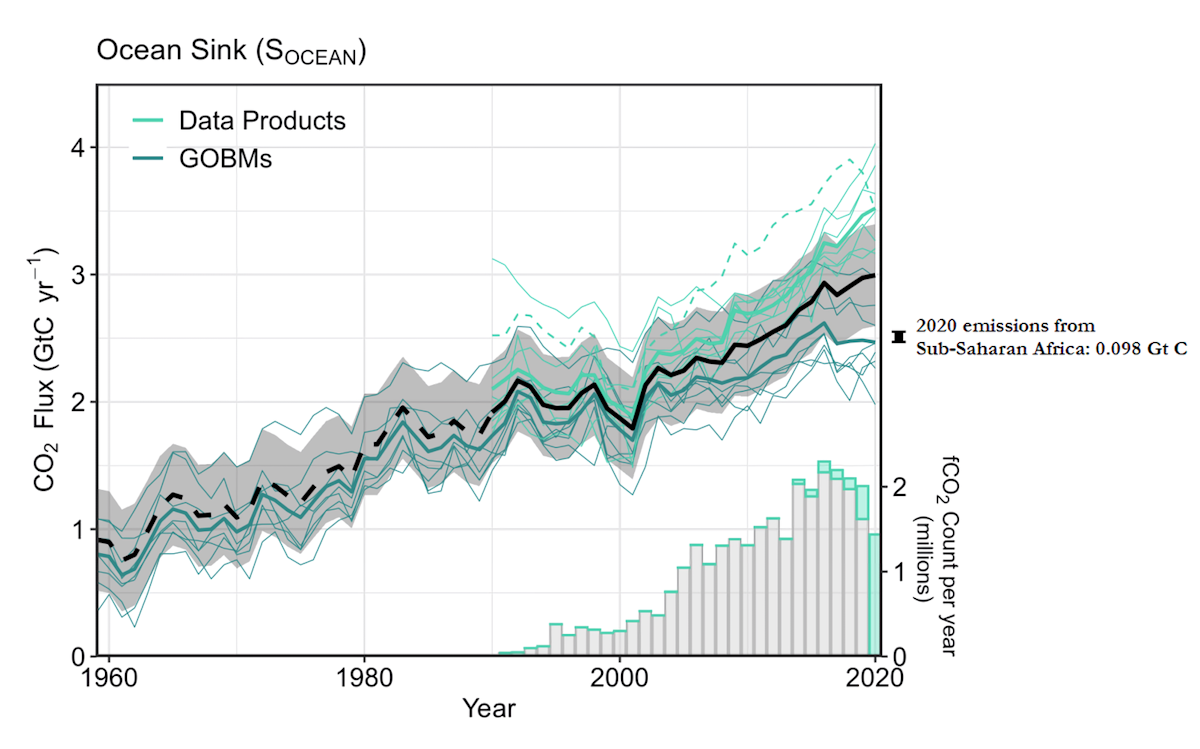The Rich World — Not Sub-Saharan Africa — Needs to Lead on Decarbonization

-
-
Share
-
Share via Twitter -
Share via Facebook -
Share via Email
-
At COP26 in Glasgow, wealthy nations including the US, UK, Canada, and France pledged an end to public financing for fossil energy projects abroad, a policy which would not affect their own fossil fuel use while restricting energy options for the poorest countries, especially in Sub Saharan Africa. In effect, the rich world is asking some of the world’s poorest countries to take the lead on decarbonization.
Considering the minimal quantity of carbon dioxide developing Africa currently emits, this makes little sense. The amount of fossil fuel carbon emitted each year by the 48 countries of Sub-Saharan Africa combined is so small that a modest, recently-published revision in global carbon fluxes estimated by climate scientists might as well have erased Africa’s emissions entirely – several times over.
In 2020, the 1.1 billion people living in Sub-Saharan Africa emitted just 0.361 gigatons (Gt CO2) of fossil CO2 emissions, a quantity equivalent to 1 percent of global fossil emissions that year. In contrast, researchers at the Global Carbon Project (GCP) published their most recent updates to worldwide CO2 emissions, with the notable new finding that global greenhouse gas emissions from land-use changes like deforestation and agricultural development were likely overestimated by between 1 to 2 Gt CO2 over much of the past decade (Figure 1). The magnitude of this moderate downward correction in annual land-use emissions just published by the GCP dwarfs fossil fuel emissions from Sub-Saharan Africa several-fold. Meanwhile, the one-sigma uncertainty range of global land-use change emissions spans values that are 5 Gt CO2 apart, nearly 14-fold larger than the quantity of emissions from Sub-Saharan Africa.
Figure 1

The same GCP study reported new estimates of the ocean carbon sink, or the amount of carbon dioxide absorbed by the ocean each year (Figure 2). This quantity is calculated using both measurement-based and model-based approaches, with the two categories of methods producing values that differ by around 1 Gt C. This discrepancy is more than 10 times greater than Sub-Saharan Africa’s fossil CO2 emissions (equivalent to ~0.098 Gt C in 2020).
Figure 2

In other words, fossil fuel emissions from Sub-Saharan Africa are so small that even if doubled or tripled, they would still be small enough to be dwarfed by a routine revision in global carbon cycle fluxes by climate scientists.
The familiar climate slogan is that the planet simply cannot afford any additional use of fossil fuels. This may be true from a global perspective. But the use of fossil fuels is highly unequal, with wealthy- and middle-income countries consuming the lion’s share while the poorest countries use very small amounts. Africa accounts for 0.55 percent of historical cumulative carbon emissions. If the 48 countries of Sub-Saharan Africa tripled their electricity consumption using only gas, the additional CO2 would still only add up to less than 1 percent of the global total.
Few would disagree that people living in Zimbabwe or the Democratic Republic of the Congo need more plentiful, reliable energy. Yet the suggestion that Zimbabweans or Congolese might meet such needs by burning fossil gas can give rise to hesitation among the climate-minded. Such hesitancy fails to recognize that natural gas is consumed in growing, far larger quantities in wealthier countries, produces fewer emissions than coal or oil power generation, and that even with expanded gas use Africa’s share of carbon emissions will continue to be very low over the next several decades.
The reality is that it is continuing fossil fuel use by the rich world that is incompatible with a stable climate. Australia, for example, has a population of 25 million — 2.3 percent that of Sub-Saharan Africa’s — but emits tens of millions more tons of fossil carbon. Multiplying fossil fuel use in Africa several-fold will have little to no impact on the planet’s climate future.
African leaders aren’t necessarily calling for fossil fuel emissions to triple in the coming decades. There are almost no new coal projects planned, and international financial institutions do not fund coal projects. Countries like Nigeria and Kenya, with virtually no culpability for current climate change, are already going above and beyond their obligations by deploying clean energy and setting ambitious climate targets. African policymakers are fully aware that clean technology is the future and cognizant that over-commitment to fossil fuel infrastructure carries risks.
Fossil gas remains an affordable, reliable power source with important applications in difficult-to-decarbonize sectors like heavy industry and fertilizer production. Clean energy alternatives for many industrial processes remain expensive and in early development. No wealthy country has achieved developed status without leveraging some fossil energy. Buildouts of renewable energy in advanced economies have depended on a backbone of reliable generation that has often come from fossil gas. If emissions from Ethiopia or Uganda increase, the climate will easily withstand it. It will be the wealthy and middle-income countries of the world that will overwhelmingly determine the future trajectory of climate change, and a modest increase in fossil CO2 from developing African countries does not remotely alter that fact.
As things stand, two unsettling trends in global climate politics threaten to limit the energy options of poor nations. First, wealthy countries continue to underdeliver on climate finance, offering woefully insufficient funding to support climate adaptation and loss and damage. Second, many of the same countries have proclaimed that they will no longer provide public financing for fossil energy projects abroad while maintaining or increasing their use of fossil energy at home.
Sub-Saharan Africa must achieve energy security in the coming decades, to lift millions of people out of poverty and protect them from climate impacts. Africa’s emissions for the foreseeable future will remain smaller even than the margin of error in carbon cycle fluxes calculated by climate scientists. It makes no sense for policymakers, bankers, and activists from the wealthy world to agonize over natural gas projects in some of the poorest countries on Earth while doing little to curb their own use of fossil fuels.
Rich countries need to further increase support for clean energy development in Sub-Saharan Africa. Meanwhile, the developed world should lead by example, fully decarbonizing their own power grids and energy systems before requiring the same of the world’s poor. And should poor countries seek to build gas plants in addition to clean energy to meet important energy needs, the first response of the rich world should be to redouble efforts at home, not to try and place restrictions on others.



